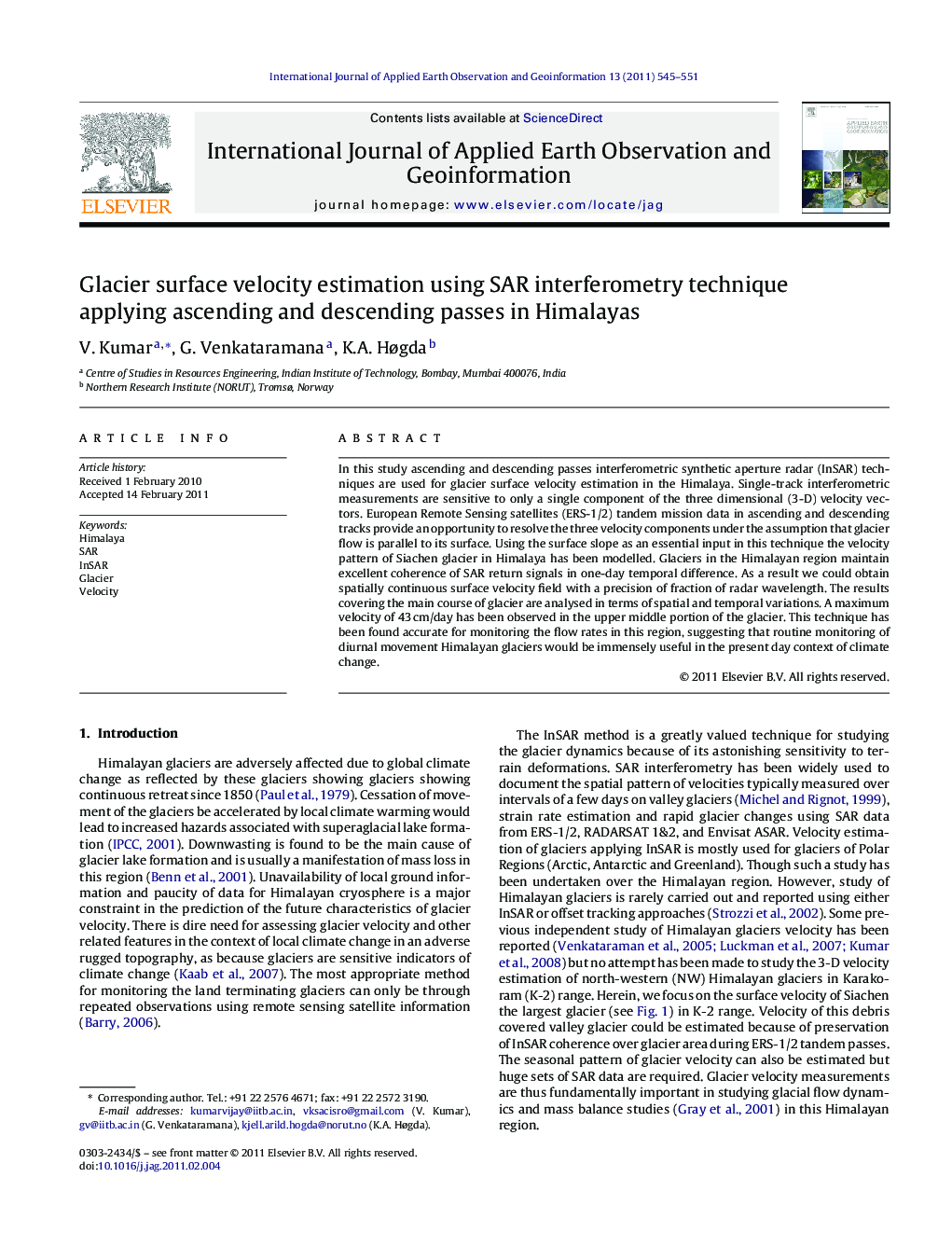| Article ID | Journal | Published Year | Pages | File Type |
|---|---|---|---|---|
| 4465232 | International Journal of Applied Earth Observation and Geoinformation | 2011 | 7 Pages |
In this study ascending and descending passes interferometric synthetic aperture radar (InSAR) techniques are used for glacier surface velocity estimation in the Himalaya. Single-track interferometric measurements are sensitive to only a single component of the three dimensional (3-D) velocity vectors. European Remote Sensing satellites (ERS-1/2) tandem mission data in ascending and descending tracks provide an opportunity to resolve the three velocity components under the assumption that glacier flow is parallel to its surface. Using the surface slope as an essential input in this technique the velocity pattern of Siachen glacier in Himalaya has been modelled. Glaciers in the Himalayan region maintain excellent coherence of SAR return signals in one-day temporal difference. As a result we could obtain spatially continuous surface velocity field with a precision of fraction of radar wavelength. The results covering the main course of glacier are analysed in terms of spatial and temporal variations. A maximum velocity of 43 cm/day has been observed in the upper middle portion of the glacier. This technique has been found accurate for monitoring the flow rates in this region, suggesting that routine monitoring of diurnal movement Himalayan glaciers would be immensely useful in the present day context of climate change.
Research highlights► Three dimensional glacier velocity estimation using SAR interferometry in the Himalayas. ► Analysis of the movement results along the central line of the glacier. ► Limitations of the SAR interferometry for resolving full 3D motion of the glaciers. ► It is a first attempt to estimate glacier velocity in K-2 range of Himalayas.
